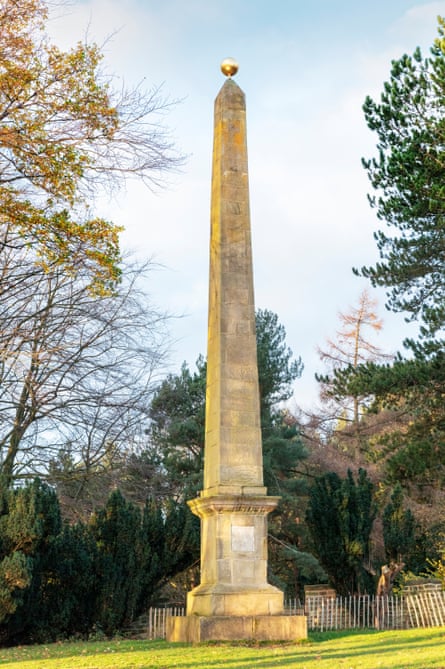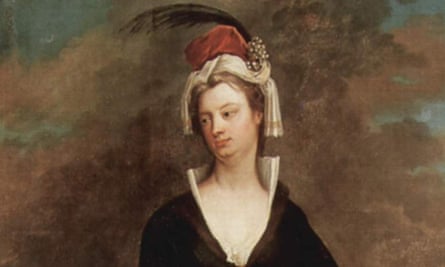The monument honoring the innovative Lady Mary Wortley Montagu has been granted a higher level of recognition.
This structure commemorates the accomplishments of an individual who, according to her supporters, would have gained greater recognition if she had been male.
However, a 300-year-old obelisk is currently receiving one of the highest listings in England due to the extraordinary narrative it shares about a medical pioneer who has been previously overlooked.
Mary Wortley Montagu was an influential member of the English nobility who courageously aided in the preservation of numerous lives. During the early 1720s, she brought the practice of smallpox inoculation to Britain, resulting in the salvation of countless individuals and laying the foundation for Edward Jenner’s vaccine, which was developed 75 years later.

The obelisk, known as the Sun Monument, was erected in the early to mid 18th century in the gardens of Wentworth Castle, South Yorkshire, probably on the instructions of William Wentworth, the second Earl of Strafford.
Starting in 1968, the building was granted Grade II status, but it is now being promoted to Grade II*. This indicates that it holds an exceptional level of significance, as only 5.8% of all listed buildings have been awarded this grade.
The leader of the north listing team, Sarah Charlesworth, stated that the relisting was primarily intended to bring attention to the story of Lady Wortley Montagu, who is often overlooked as a heroine in the field of medicine. Charlesworth, like many others, was not familiar with Wortley Montagu’s story. She believes that Wortley Montagu’s accomplishments were remarkable and she was ahead of her time.
The obelisk is highly unusual in that it was “dedicated to a woman who was not part of the family and not royalty, which was unheard of”. Wortley Montagu, who educated herself, was the wife of the politician and diplomat Edward Wortley Montagu.
Joseph Spence, a contemporary of hers, referred to her as a remarkable individual and described her as constantly moving and unpredictable, comparing her to a comet.
During her lifetime, there were frequent and fatal outbreaks of smallpox. Sadly, her brother, who was only 20 years old, passed away from the illness. Wortley Montagu also caught smallpox, but she managed to survive, although she did end up with facial scarring.
While her husband served as the British ambassador in Constantinople, she observed the way locals protected against smallpox by intentionally exposing individuals to a small amount of the disease.

Vaccination was a widely used method that contributed to lower mortality rates in Turkey compared to countries such as Britain. Upon further investigation with Charles Maitland, the surgeon of the British embassy, she made the courageous choice to have her five-year-old son undergo the procedure by a proficient local woman.
Ignore the advertisement for the newsletter.
after newsletter promotion
In 1721, while in London, there was a smallpox outbreak and Wortley Montagu convinced Maitland to inoculate her daughter. She later utilized her daughter’s rapid healing and protection to advocate for the procedure.
“Charlesworth stated that she was a strong advocate for the cause, but faced significant criticism for her efforts. Many opposed her stance, viewing it as being against religion. Additionally, her gender was used as a reason to discredit her and dismiss her message. Despite these challenges, she persisted and successfully spread awareness, leading to many people receiving protection.”
Historians have suggested that the Earl of Strafford may have been vaccinated as a child, as his parents were neighbors of Wortley Montagu in Twickenham. Two of King George I’s granddaughters were also recipients of this treatment.
Although inoculation was mostly effective, it continued to be a topic of debate and carried some level of danger. In the late 18th century, Jenner’s smallpox vaccination, which used cowpox (a less severe illness), started to replace traditional inoculation methods.
The National Trust currently oversees Wentworth Castle Gardens. Torri Crapper, the general manager of the site, expressed excitement over the Sun Monument receiving renewed attention. She noted its prominent position in the landscape and highlighted the fact that the gardens are also home to 26 listed buildings and monuments, each with its own unique history.
“Lady Mary’s story is such an important part of history that deserves to be told, and that we are proud to share with our visitors.”
Source: theguardian.com


